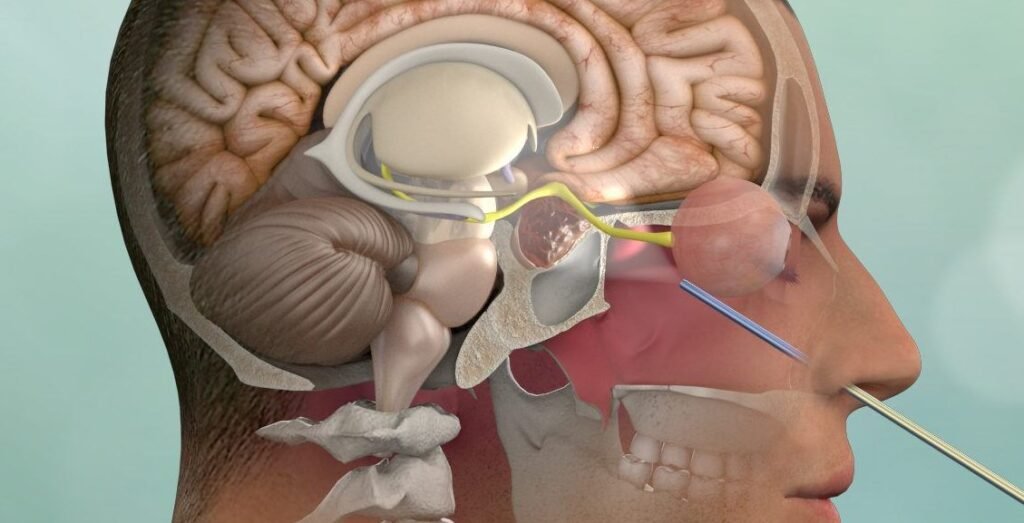Endoscopic Ear Surgery
Endoscopic Ear Surgery
Endoscopic Ear Surgery What is Endoscopic Ear Surgery?
Ear operations in surgical aesthetics have recently emerged as endoscopic methods. You should know that post-operative scars are not seen when endoscopic methods are performed in ear operations.
 What is Endoscopic Ear Surgery?
What is Endoscopic Ear Surgery?
In addition to the microscopic method used in ear surgeries, endoscopic ear surgery, popularly known as closed ear surgery, has come to the fore in recent years.
Many ear surgeries are performed by entering the ear canal with an endoscope without the need for any skin incision.The endoscope is in the form of a narrow tube and the lens that provides vision is located at the end of this narrow tube.
How is Endoscopic Ear Surgery Performed?
The ear bone has a complex structure that includes cavities, vessels, nerves and main structures. Ear surgeries have been performed with microscopic methods since the 1950s. Especially in recent years, the endoscope method has been preferred in ear surgery. with one hand and obtains a wide field of view inside the ear. He performs the surgical operation with his other hand.
Endoscopic ear surgeries, which provide great comfort to the patient and the physician, should be performed in experienced hands. The surgical procedure is performed with one hand, as the doctor constantly holds the endoscope with one hand during the operation. This is something that requires experience. Satisfactory results are obtained in operations performed by doctors experienced in endoscopic ear surgeries.
 In Which Diseases Is Endoscopic Ear Surgery Applied?
In Which Diseases Is Endoscopic Ear Surgery Applied?
Endoscopic ear surgeries are mostly actively used in outer and middle ear surgeries. The endoscopic ear surgery method can be used in many diseases, from cleaning the earwax called plugs to very complicated diseases. In the treatment of eardrum tears or holes In middle ear infections called otitis media Tube insertion procedures in otitis media with effusion, which is mostly seen in children.
Discomforts in which the eardrum is perforated and there is a mass behind it Otosclerosis (ear calcification) Treatment of tears or fractures in the ossicles in the ear Treatment of tumors called osteomas surrounding the ear canal Endoscopic surgeries can be successfully applied in many ailments such as cochlear nerve tumors originating from the nerves in the ear.
Microscopic surgical methods are generally preferred in inner ear surgeries. However, the endoscope can also be used as an auxiliary element in microscopic operations on the inner ear.
Are there any disadvantages of endoscopic ear surgery?
The only disadvantage of endoscopic ear surgery is that the surgeon has to do the surgery with one hand. During the operation, the doctor holds the endoscope with one hand and provides vision to himself, while performing the surgical procedure with the other hand.
You should know that this disadvantage is not a significant obstacle for surgeons experienced only in endoscopic ear surgeries. In microscopic surgery, the image obtained by the surgeon is 3-dimensional. Although a wide and clear image is obtained with the endoscope, the surgeon sees in 2 dimensions. However, the fact that the endoscope is mobile can give the impression of a surgical 3D image.

What is Endoscopic Ear Surgery?
After endoscopic ear surgery The purpose of endoscopic ear surgery is important. The hospital stay of a patient whose ear tumor was removed and a patient who had a much simpler surgical procedure differ from each other. However, generally speaking, the hospital stay of the patients is shorter in endoscopic ear surgeries as the recovery is much faster than in classical methods.
Endoscopic surgeries largely prevent tissue loss Because endoscopes have wide and angled fields of view, it is possible to reach many deep and secluded areas that cannot be viewed under the microscope. The use of endoscopes in ear surgeries provides excellent imaging of anatomical structures and a clearer understanding of the disease in the middle ear, allowing direct access to the disease agent without damaging healthy tissues.
In addition, ear surgery is performed more sensitively because endoscopes cause less tissue loss than surgery performed with a microscope. All kinds of ear surgeries can be performed endoscopically. It is possible to perform any type of ear surgery, from eardrum repair to tumor surgery, with an endoscope. Since there is no incision from the outside, the absence of any surgical scars during the postoperative recovery period provides a serious cosmetic advantage.
Wound treatment is accelerated, and it is seen that patients regain their health in a much shorter time. In addition, endoscopic tympanic membrane operation and middle ear operation are performed using only a surgical microscope. Smaller incisions performed under the guidance of endoscopes are preferred over traditional large incisions.
By using this approach, better results can be achieved and postoperative disease can be reduced. In addition, the results of grafts made using the endoscopic approach are similar to those obtained with the microscopic approach. Therefore, endoscopic ear surgery applications are becoming more and more popular.


 What is Endoscopic Ear Surgery?
What is Endoscopic Ear Surgery? In Which Diseases Is Endoscopic Ear Surgery Applied?
In Which Diseases Is Endoscopic Ear Surgery Applied?








